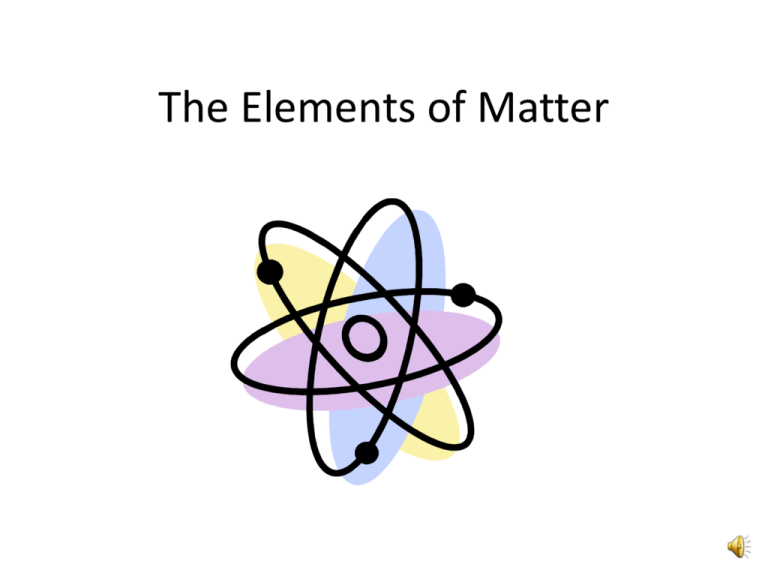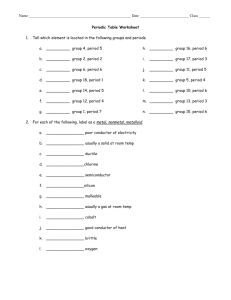The Elements of Matter
advertisement

The Elements of Matter Matter Everything on earth is made up of matter. Matter is anything that has mass and takes up space. Dirt is matter. Orange juice is matter. Even air is matter. Three Types of Matter All matter is classified into one of three groups: Atoms All solids, liquids, and gases are made up of very, very small particles called atoms. To see an atom, you would have to use a VERY powerful microscope. Parts of an Atom Atoms are made up of even tinier parts called electrons, protons and neutrons. How It Moves The protons and neutrons of an atom are located in the center of the atom. Scientists call the center of the atom the nucleus. The electrons rotate around the center in areas called orbitals. Different Atoms Atoms have different numbers of electrons, neutrons and protons depending on what kind of atom it is. The different number of neutrons and protons makes what is called an element. Elements All matter is made up of elements. Combining two or more elements can make different types of solids, liquids, and gases. How many elements are there? There are 92 elements that occur naturally. The elements hydrogen, carbon, nitrogen and oxygen are the elements that make up most living things. Some other elements found in living things are: magnesium, calcium, phosphorus, sodium, and potassium. The Periodic Table of Elements is a way of organizing all the elements. Organizing Elements Elements are organized on the Periodic Table based on their atomic number and atomic mass. The atomic number is how many protons the atom has. The atomic mass is how many protons and neutrons the atom has. Examples of Elements When you put two or more elements Hydrogen and oxygen are examples together, you get a new solid, liquid of elements. or gas. For example, 2 hydrogen atoms and one oxygen atom make water. H H H O 2 Hydrogen + 1 Oxygen = H20 or water Hydrogen O Oxygen Adopt an Element Now you are going to find out more about a particular element. You will list all the information asked on the Adopt an Element Fact Sheet for your assigned element. Click on your element on the periodic table on the website below to find the information you need. Chemicalelements.com Don’t forget to use the periodic table on the BACK of your Adopt an Element Fact Sheet to find out if your element is a solid, liquid or gas and what family it belongs to. Choose a Science game to play. Periodic Table Hangman Element Lab Crazy Classroom





